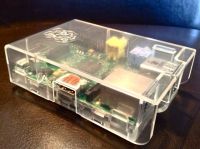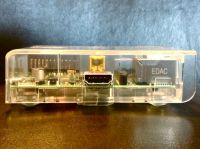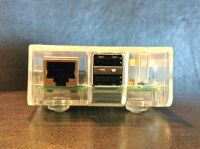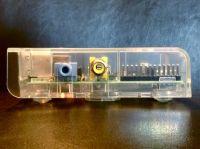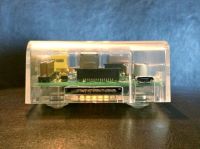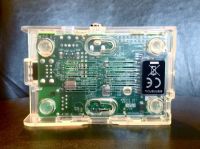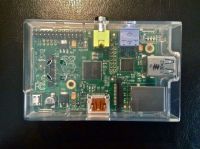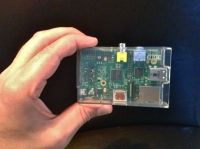Revolutionary Raspberry Pi

I recently heard of an exciting "new" tech gadget that is more than just a gadget - it's an inspirational, educational wonder designed to get kids interested in computer science. It's called the Raspberry Pi, and it even has this 30-year-old kid inspired.
The Raspberry Pi is a tiny, credit-card sized computer that fits in the palm of your hand, but can run a full desktop operating system capable of doing all the usual tasks like browsing the internet, writing papers - or like the makers of the Pi intended - writing programs and playing with circuits!
By the way, the engineers involved in the project give their evenings and weekends to the Raspberry Pi Foundation (so far without pay) because they believe the Pi can inspire kids the way they themselves were inspired. Way to go guys.
But the Raspberry Pi isn't just for curious kids. After all, I can think of almost limitless uses for a tiny programmable computer. And lots of other folks have thought about it too. One of the most exciting for the everyday consumer is its potential to become a really inexpensive home theater PC.
Raving about Raspbmc
So that's where I decided to start with my own Raspberry Pi. I won't bother writing another tutorial here - because there are already lots of them out there! A good place to start with media center software is www.raspbmc.com/download/. Raspbian is a minimal install of Debian and XBMC made just for the Raspberry Pi, and I was really impressed. I installed it on an old 2GB SD card before I even ordered the Raspberry Pi - I was obviously very excited (The Pi uses an SD Card the way most computers use a hard drive. 2GB is the minimum, 4GB is recommended). When my Pi arrived, I unboxed it, plugged in network cable, HDMI, SD card, and power, and sat back and watched. XBMC installed like a charm (it took about 30 min all said and done) with no interaction from me until it was ready for me to choose some preferences. Forgive what I'm about to say. I can't help it - it really was easy as Pi.
Before I make it sound like raspbmc is the ultimate and has no problems, allow me to tone down my techie excitement and tell you some of the negatives I experienced. Raspbmc did not operate totally without some hitches. A few times it got stuck, mostly when I tried to abort a navigation or selection that became slow, and even rebooted unexpectedly in a few of these situations. There are also a few major app options missing that you may find on some of the commercial media boxes like Roku or Boxee. Namely, I would have loved to see some of the big name addons like Netflix, Pandora, or Amazon Video, but free addons like this are often hindered by said companies since they benefit from pushing consumers toward platforms they are making money off of, understandably.
Here are the things that amazed me out of the box:
(some of which is a testiment to the work already done by the XBMC/Raspbmc developers)
- Like I said before, Raspbmc installed with no errors, and no interaction from me. This is partly due to the fact that it was specifically setup for this piece of hardware, so there are no surprises.
- My TV remote (Panasonic Vierra) controlled the Raspbmc menus through the HDMI with no setup at all! And obviously audio passes to the TV as well, so no need for another cable there.
- I was able to connect to an existing network share and stream movies within minutes. And no skipping or weird video artifacts.
- XBMC works as an AirPlay reciever! So you can send audio, and potentially video from your iOS devices to the Raspberry Pi like you would an Apple TV, although the video didn't work for me so far, so be cautious if this is the main reason you buying it.
I also gave Raspbian a try - the recommended operating system for the Raspberry Pi. You can see a few of the options at www.raspberrypi.org/downloads. Raspbian may at first seem a bit limited to the average Windows or Mac user, but it has all the basics, and you can easily add whatver you want through the Pi Store, or by more traditional methods if you are (or become) familiar with Linux. And in keeping with the thrust of the project, they've included lots of great programming tools out of the box.
Raspberry Pi related links:
The Ben Heck show - Build a retro computer with Raspberry Pi
If you buy the basic $35 version of the Pi, you get only the bare board. To get a bit more protection, especially since i wanted to try it out as an HTPC, I opted for the version that includes a clear case. I'd recommend it. It's really nice. It has really cool little rubbery feet, and I noticed it even has screw mounts. Below is a gallery of my Raspberry Pi from just about every angle.

